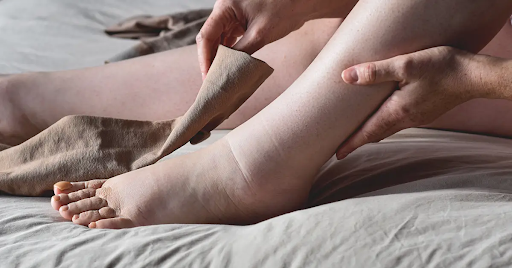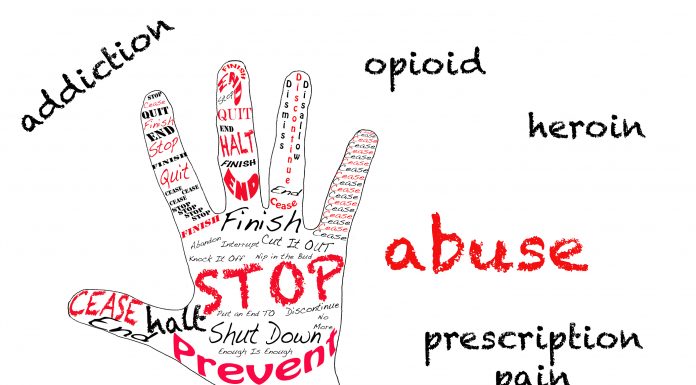Edema is a medical condition that causes swelling in different body parts. Treatment options include medication, compression stockings, and lifestyle changes.
It can be caused by pregnancy, injury, or medications. Edema, which results in an accumulation of bodily fluids in a specific area, causes swollen feet.
You should immediately seek medical assistance if the swelling is significant or abrupt, as these symptoms may indicate a more serious medical problem.
Maintaining a balanced diet and exercise program can also assist in preventing.
Further, upholding a healthy diet and exercise schedule can aid in preventing foot swelling.
It’s crucial to monitor the swelling and get medical help if it worsens or if you notice any other unsettling symptoms, including discomfort or fever.
In this article, we shall discuss some techniques that can help you fight and feel comfortable when facing a case of swollen feet.
Why Do You Have A Swollen Foot?
In edema, a medical disease, body fluids build up in one area of the body, such as the feet.
Several things, including pregnancy, heart or kidney disease, or even some medications, can cause it.
Dehydration and past injuries are a few health conditions that can cause swollen feet and ankles.
You should see a doctor if the swelling doesn’t go away or is coupled with other symptoms like pain, redness, or warmth.
Depending on the underlying reason, treatment options could include a change in lifestyle, medication, or more medical assistance.
It is crucial to speak with a medical expert if the swelling persists or is accompanied by additional symptoms like pain, redness, or warmth.
How To Treat Swollen Feet?
Given below are the techniques that will help you overcome the pain and discomfort of having swollen feet—
1. Epsom Salt
Magnesium and sulfate are components of the natural substance known as Epsom salt, which can aid in alleviating muscular cramps, improving circulation, and reducing swelling.
It may be used in a number of ways, including as a compress or as part of a heated bath.
However, using Epsom salt may cause side effects in some people, such as skin rashes or allergic reactions.
Epsom salt includes hydrated magnesium sulfate crystals, which help treat and provide instant relief for tight muscles.
It also functions as a natural exfoliant to remove dead skin cells and lessen swelling and inflammation. It may be put into a warm bath for a calming and healing soak.
2. Wear The Right Footwear
You must wear supportive shoes if your feet, legs, or ankles are swollen. To encourage appropriate alignment and ease the strain on the feet, picking shoes with strong arch support, a wide toe box, and a low heel is critical.
By applying pressure to the region and enhancing blood flow, compression socks can assist in minimizing swelling and discomfort.
A warm embrace and extra wide women’s shoes for swollen feet provide the room and support you need to feel less pain and suffering.
When choosing shoes, it’s critical to put comfort and support first, especially for people with broader feet or specialized foot issues.
Finding the appropriate fit also benefits from seeking advice from a podiatrist or shoe expert.
3. Stay Hydrated And Avoid Alcohol
It’s crucial to keep hydrated throughout the day by drinking enough water to avoid edema and other dehydration-related health problems.
Consuming meals like fruits and vegetables that are high in water content can also help you stay hydrated.
Avoiding alcohol is also a good idea since it tends to dehydrate the body, which makes the blood lose fluids more quickly than other drinks.
To prevent any potential harm to your health, it’s also crucial to consume alcohol in moderation and responsibly.
Additionally, eating a meal before drinking can lessen the effects of alcohol on your body by slowing down the absorption of alcohol into your bloodstream.
To keep hydrated and avoid binge drinking, it is advised to consume a glass of water in between alcoholic beverages.
4. Contrast Bath
A contrast bath includes submerging the feet in alternating hot and cold water to treat swollen feet naturally.
Athletes frequently utilize this therapy to ease discomfort and speed up muscle recovery. It includes taking short, hot-and-cold water baths back and forth.
This can assist in decreasing swelling and ease foot discomfort. But it’s crucial to avoid using scalding hot water.
A contrast bath is a straightforward yet efficient home remedy for treating injuries, including sprains and strains.
It can also be helpful for those with arthritis or poor circulation. A healthcare professional should be consulted before beginning this therapy.
5. Ice Pack
An efficient at-home treatment for swollen feet is an ice pack.
To avoid frostbite, it’s crucial to cover the ice pack in a towel or piece of fabric before putting it on the skin, and you should wait at least 20 minutes before doing it again.
Use the ice pack again if the swelling does not decrease after a few hours.
You can also lessen swelling and boost circulation by putting on a warm compress or soaking your feet in warm water.
Lying down and raising your feet above your heart level might also reduce edema. It is important to see a doctor if swelling worsens or other symptoms accompany it.
6. Lymphatic Drainage
For patients undergoing cancer treatment or surgery, lymphatic drainage massage is a non-invasive and gentle approach that may be utilized as a supplemental therapy to reduce edema and enhance recovery.
People with fibromyalgia or chronic fatigue syndrome can also benefit from it. One-way pumps, lengthy strokes, and kneading are some massage methods employed for lymphatic drainage.
These methods pump or massage the lymph nodes in the legs using either the hands or tools.
Lymphatic drainage massage is frequently used as adjunctive therapy for illnesses including lymphedema, fibromyalgia, and chronic fatigue syndrome. It can help reduce swelling, enhance circulation, and strengthen the immune system.
7. Avoid Sitting For Too Long
Exercise is crucial for reducing edema because it supports healthy muscle function and encourages adequate blood flow.
Frequent exercise can also aid in lowering inflammation and enhancing lymphatic drainage, which can help stop the onset of edema.
Before beginning any new exercise program, speaking with a healthcare provider is crucial, especially if you have a history of edema or other medical conditions.
Every 30 minutes of sitting or standing, taking a break, and standing are advised to lower your risk of developing these health issues. Additionally, regular exercise can lower the likelihood of developing these health issues.






















